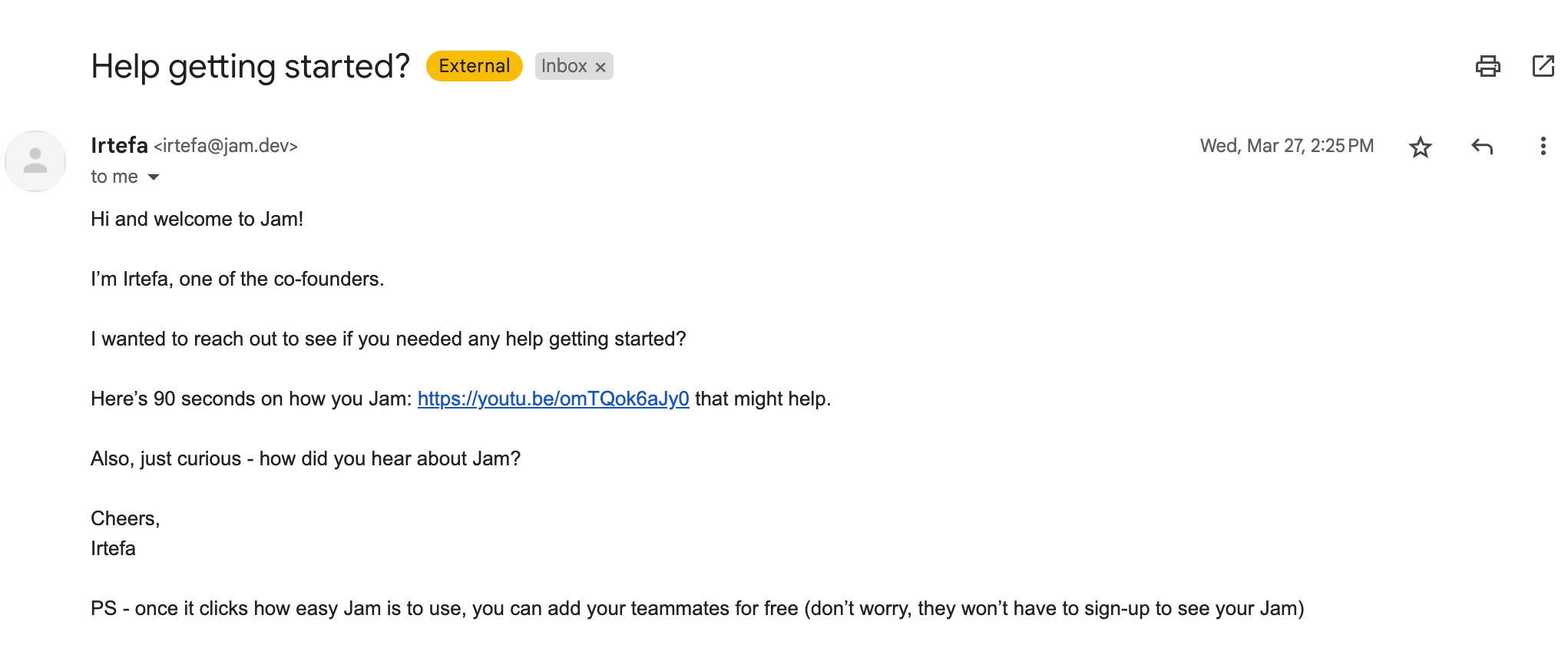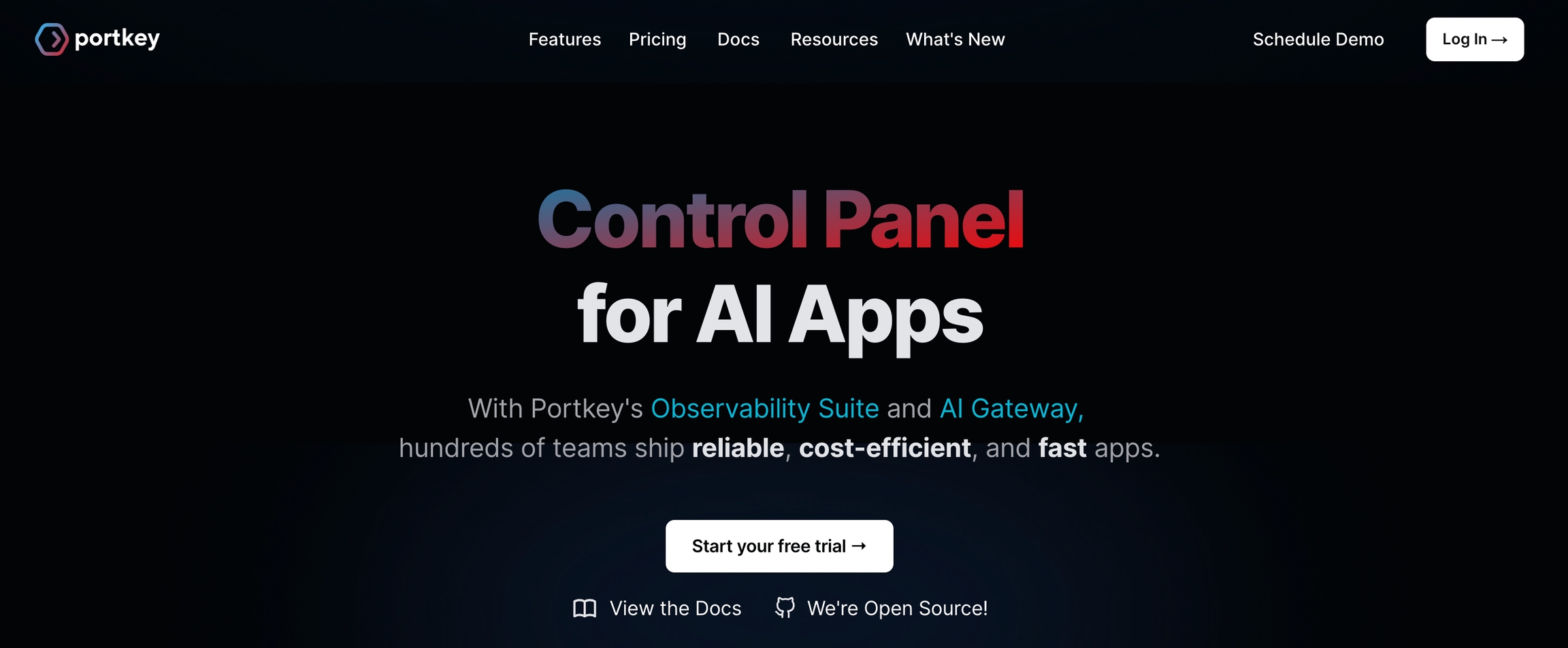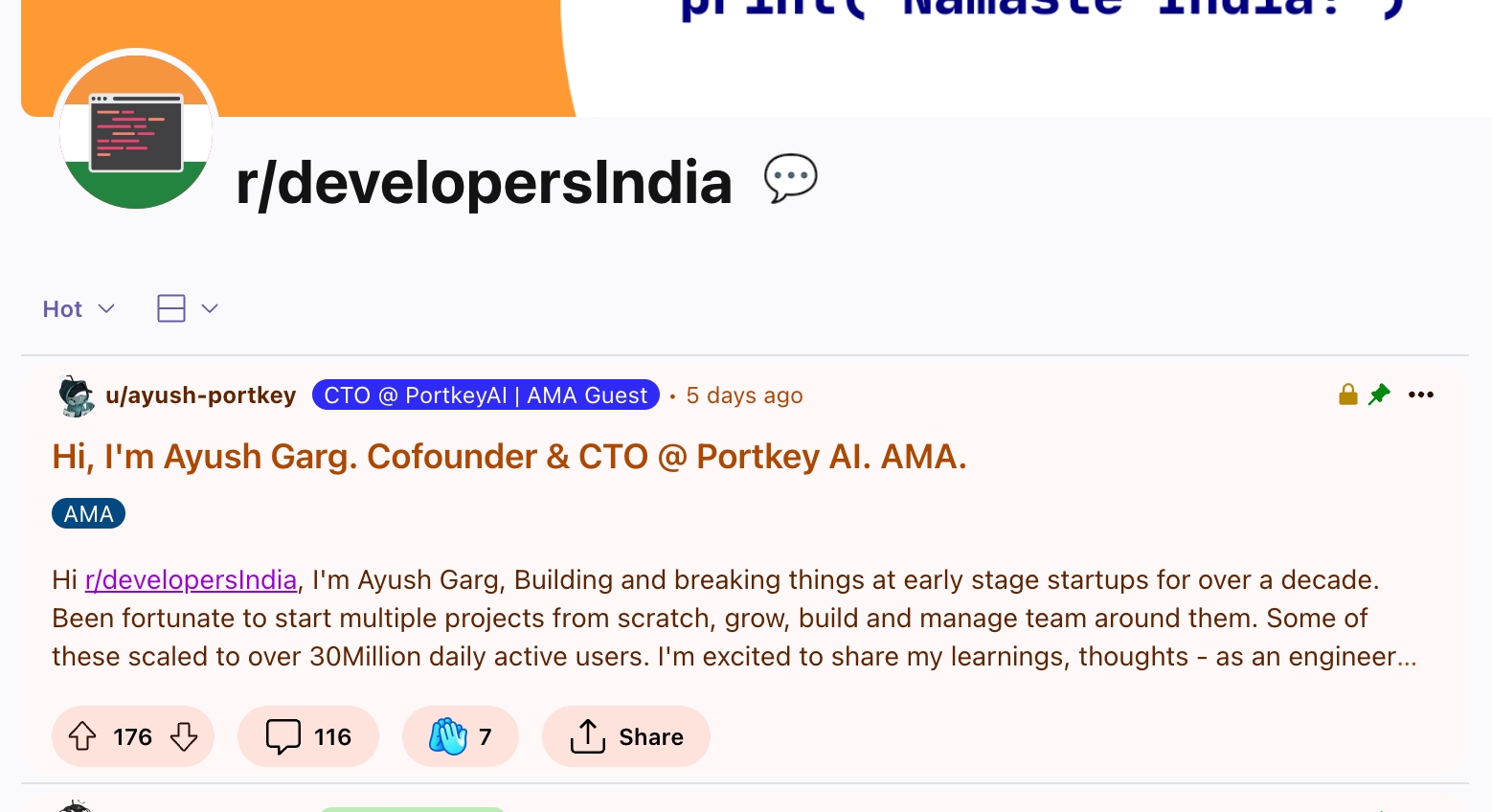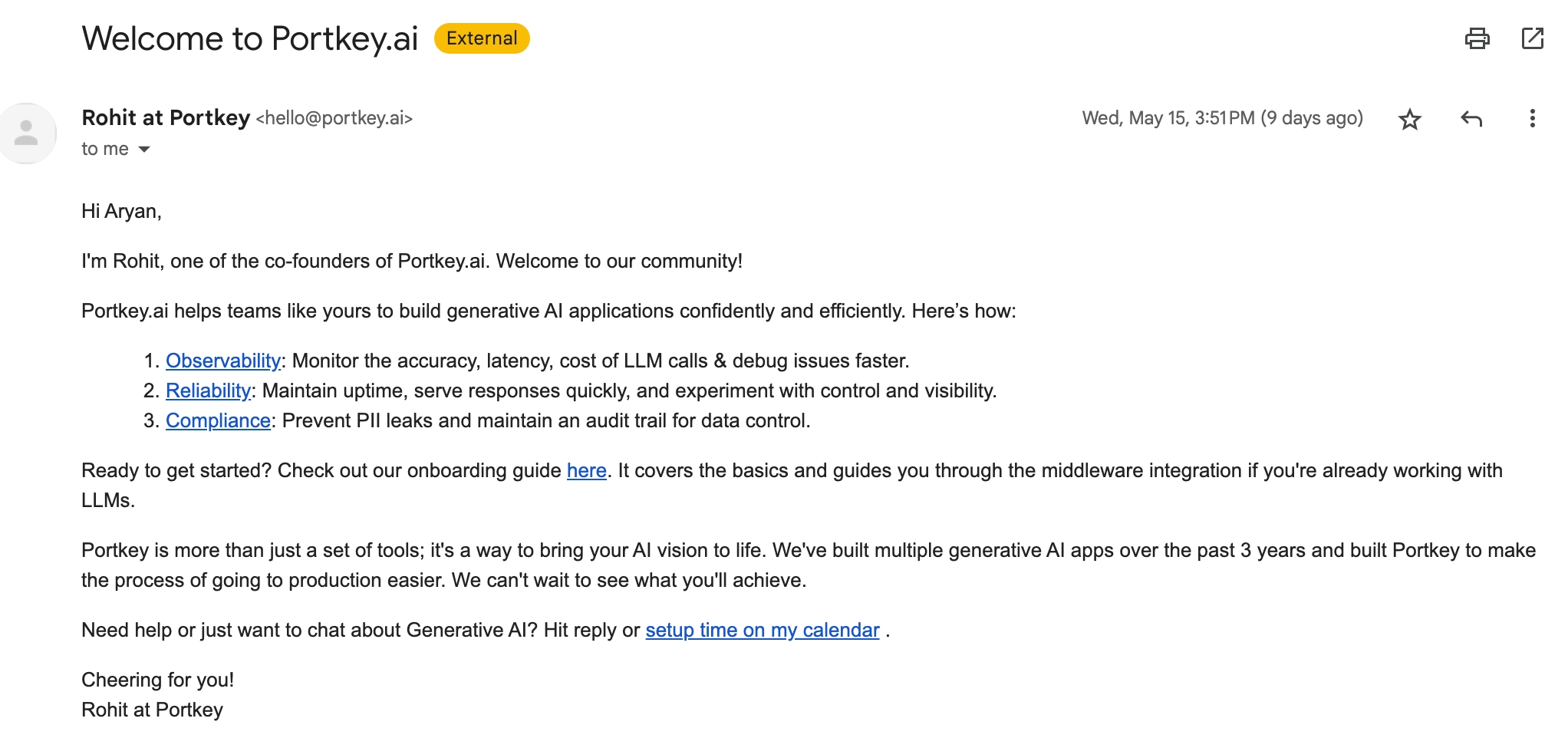📩Understanding Users and Founder-led Sales
Do you have any questions, need personalized guidance, or want to share your journey in this playbook? We'd love to talk to you. Reach out to us.
Yes, it’s true that most developers like to explore a product on their own first. They typically seek assistance or engage in conversation when encountering specific use cases or deep technical queries. Therefore, it's crucial to understand their needs, pain points, and those of their team. Tailoring our messaging based on the audience we're addressing can significantly enhance our communication effectiveness.
"Founders should engage directly with developers, speaking their language and sharing authentic stories of product development. Transforming users into advocates amplifies credibility and drives organic growth." - Developer Advocate at Hashnode
Can I speak to a human, please?
In many purchasing journeys, human interactions play a crucial role, even within self-service models. Surprisingly, 52% of respondents report human touchpoints when enterprise users independently onboard to the product. So, It's recommended that you, as a founder, send out a personalized email to an enterprise signup.
When should you layer the human touch?
Finding the right balance in hybrid go-to-market strategies means knowing when to employ different approaches effectively. Should sales teams send personalized emails to every sign-up, or is it better to wait until prospects are more familiar with the product? Is there room for a more automated approach before sales gets involved?
The most popular playbooks in Product-Led Sales (PLS) rely heavily on human touch points:
Assist: This playbook focuses on helping new freemium or free trial users reach a specific milestone in the product within the first 7 or 30 days. Its goal is to guide users to find value quickly.
Convert: Similar to the Assist playbook, but with the explicit aim of converting high-potential free users into paying customers. Sales teams target users with good product usage and a high fit for the ideal customer profile (ICP).
Expand: The goal of an expansion playbook is to align customers' product usage with their business objectives. By analyzing usage patterns, sales teams identify opportunities for expansion and present a compelling business case to key decision-makers.
While many enterprises prefer a self-serve approach for smaller licenses, high-intent users who click "contact sales" demonstrate readiness to purchase. This call-to-action captures users in the advanced stages of the buyer's journey, indicating a strong intent to buy.
How to identify top users/accounts and reach out to them
List of Signals for reaching out to prioritize users:
Additional reads:
We found a great read from Correlated on sending sales emails to Developers:
A simple welcome email without any jargon and flashy CTAs usually works. Here's an example from JAM:

Example: Portkey's founders also reach out personally to many users, sending personalized milestone-based emails to top users.
Example: Portkey

Portkey launched last year and we were curious to know how Portkey is thinking about early GTM, So we spoke to Vrushank, a founding member of their Go-To-Market (GTM) team, to understand how they are engaging developers and creating champions for their product.
Portkey, being open source, is taking a bottom-up Product-Led Growth (PLG) strategy with a strong focus on the developer community. Here what they have to say about their high focus on community building:
"Focusing on end-users works well if the developer experience is in order. But during early stages, it's crucial to create early adopters and champions among both users and buyers to drive adoption and revenue,"
For Portkey, community engagement is at the heart of their strategy. They've built a strong presence in dev communities on Slack, Discord and Reddit even before they launched, where they actively participate and recently conducted an AMA (Ask Me Anything) session on Reddit.

Onboarding is another area where Portkey excels. Portkey has a user-friendly onboarding process, which guides new users through the platform's key features and functionalities. From interactive tutorials to personalised recommendations, Portkey ensures that developers feel confident from the moment they sign up and only focus on educating new users on the product to increase adoption.
We want every user to have a 'wow' moment during onboarding. It's the first step towards building a lasting relationship with our platform.
This hands-on approach not only strengthens the bond between the founders and the user base but also helps in understanding user needs and pain points firsthand.
"When users see that the founders are genuinely interested in their success, it creates a sense of loyalty and advocacy that is hard to replicate,"
Here's the email we got when we signed up:

While this bottom-up approach has been successful, it does come with its challenges. Scaling personalized interactions as the user base grows can be difficult, and continuously improving the product based on user feedback requires constant effort.
"We're always looking for ways to scale our personalized approach and make sure every user feels valued, even as we grow. It's a challenge, but it's a good one to have,"
Portkey's bottom-up approach to engaging developers and creating champions has been a key driver of their growth. It helps reach decision-makers faster. By focusing on the end users, building a strong community, and maintaining personal engagement, they have created a loyal base of advocates who help spread the word about their product.
As Vrushank puts it,
"Our success comes from creating real value for our users and building strong, lasting relationships with them. When developers love your product, they become your best advocates."
Outbound to mid-level engineers can be a great strategy:
The idea is to reach to the middle, team manager, while you help devs adopt and provide materials that show ROI/value to the team manager’s boss (VP/director/CTO).
It was discussed in this Hacker News thread:
“Apart from bottoms up and top down, there is a strategy called middle out where you target engineering managers and then simultaneously get developers excited with product experience and directors/VP(purchasers) excited about product value. This generally accelerates purchasing decision. What I have seen go wrong with pure devtool bottom up is devtool can see value but org does not value the tool. Just devs do not have purchasing power to get to a target Annual contract value that can justify valuations they raise. Everything is devtool space has become product led by design.”
Inbound and outbound leads require distinct approaches:
For inbound leads, who are usually aware of their problem and seek immediate solutions, provide them with documentation and resources tailored to address their specific use cases.
On the other hand, outbound leads often lack awareness of their problem or do not perceive it as significant enough. To capture their attention, offer articles, case studies, best practices, benchmarks, and other materials relevant to their situation, such as their industry vertical or domain.
Tips for dev focused founder led sales:
Developer and Business Personas Require Two Different Sales Motions
Different personas require tailored content and strategies.
Developers prioritize hands-on experience with the product, seeking a seamless, self-serve setup supported by quality documentation and an active developer community. Transparent pricing is also essential, ensuring affordability and predictability for prototyping and experimentation. Their endorsement can significantly impact sales initiatives.
Non-technical personas, on the other hand, respond well to traditional sales cycles and content. They seek clarity on how the product aligns with organizational goals, emphasizing ROI and internal KPIs during their assessment process.
Technical outreach is important, particularly for infrastructure tools.
You can be certain that developers prefer not to receive sales calls. Instead of measuring sales efforts by the frequency of attempted contact, prioritize actions that move developers closer to product deployment. This can be achieved by offering technical assistance and guidance, beginning with a straightforward inquiry: "What project are you working on? How can I assist you?"
What a developer values most is getting closer to completing what (s)he’s trying to build.
Handle Inbound Leads with Use Cases and Outbound by Vertical
When a prospect contacts your team or signs up to your service, they likely have a particular problem they’re trying to solve or a particular area of their business they want to improve using your product.
The best thing you can do to convert those inbound leads is to equip them with the relevant information about the problem they are trying to solve. Very often that means that they need information about the use case they are trying to build. Let’s say you’re a security solutions company and an events marketing agency needs to verify hundreds of user’s identities as they register. It’d be best to have a blog post or tutorial at the ready detailing the best practices for user authentication whether that’s 2FA, OTP, or TOTP. Chances are that the developer may have missed it, so the founder should surface that guidance.
For your outbound motion, you can get your Product Marketing and or Customer Marketing teams to develop content and best practices for your top verticals and create outbound sequences featuring that content.
Example: Amnic
Amnic's GTM motion is completely Outbound led as of now. In our conversation with Abhilash, head of marketing, he mentioned that their outbound effort was highly targeted, focusing on organizations that were likely to face significant cloud cost management challenges. This included sectors like FinTech and other industries heavily reliant on cloud infrastructure.
The core of Amnic's outbound messaging centered around showcasing the product and inviting feedback rather than pushing for immediate sales. This approach has been working quite well for them.
"The message that seemed to work really well is reaching out to people and asking them, look, you know, we have a product like this which helps you understand your cloud cost better. Would you like to take a look and give us feedback?" - Head of Marketing, Amnic
Last updated
Was this helpful?
